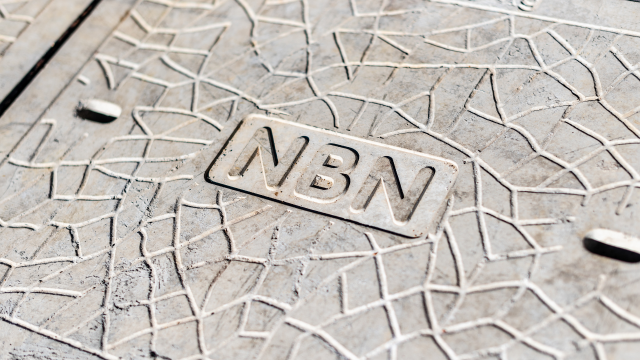Having a slow NBN connection is, simply put, painful. The expectation that Australia’s National Broadband Network should be fast enough to handle your streaming, gaming, downloading and work life isn’t unreasonable, so how might one make their NBN connection faster?
From one NBN user to another, here are my pointers on optimising your internet connection and making your NBN plan faster.
How can I make my NBN faster?
The first way to make your NBN plan faster is by upgrading your internet plan. Sometimes this means spending a little bit more on your monthly internet bill, but if you’re dependent on a strong internet connection, it’s worth splashing the cash on.
Personally, I think NBN 50 is an ideal speed for most households, offering a maximum download speed of 50Mbps. However, NBN 100 is worth considering if you’re after a faster speed.
But this isn’t the only thing you can do. If you rely on Wi-Fi, moving the modem-router around can solve your internet woes, but it isn’t a solution to be relied upon. Keeping your modem-router as close to the devices it’s servicing with Wi-Fi is one of the best ways to (physically) improve the wireless signal, though it might not be the only culprit. Some devices, such as microwaves, can cause signal issues for your modem-router, so it’s best to keep them far away.
Changing your modem-router’s Wi-Fi channel can also help. Consider switching your Wi-Fi connection to 5Ghz. This is a type of internet delivery that your modem may provide which is faster than the alternative (2.4Ghz) at the cost of shorter range. If you’re servicing a small home, 5Ghz is the way to go, however, a big home may need a 2.4Ghz connection, just to cover the corners of the property. To change this setting, you’ll need to access the backend of your modem-router.
A more sophisticated modem-router should be able to change the band that it operates on, as Wi-Fi signals in condensed living situations can interrupt each other, causing signal problems for multiple households. You’ll want to change your channel to a less occupied one, so try to run an internet test on channels as you change them, to sus out which one is the best for you.
Wi-Fi is unlikely to be faster than Ethernet on an NBN connection, so it could be worth switching to Ethernet where you can. If internet quality is a concern, don’t let it be, as this won’t drop off on Ethernet unless you’re using a cable hundreds of metres long. If you’re a power user, Ethernet is probably the way to go (coming from me, a guy who uses a 10m CAT6 Ethernet cable for his gaming computer in his apartment). Just try not to trip on the cable.
Additionally, you may notice a decline in internet quality when certain devices are on, or when someone in your home starts doing something on the internet. In this case, limit some device access to your home internet connection. Background downloads could be interfering with your internet use by hogging all the bandwidth. You can avoid this issue by simply having the devices you’re not using turned off, or disconnected from the Wi-Fi.
When should I upgrade my NBN modem?
It’s worth swapping out your NBN modem-router when it starts to inhibit performance, which I’ve noticed with older modem-routers, though keep in mind it doesn’t simply translate to a faster NBN experience. I can quite confidently say that I noticed speed improvements in some instances when I switched from the Belong 4353 router to the Eero Pro 6. Wireless VR over Wi-Fi became much, much more consistent and 4K streams loaded a lot quicker. The Belong 4353 modem was quite an old modem when I replaced it (some eight years or so, with constant use from beginning to end).
Additionally, if you’re looking at spreading the Wi-Fi signal throughout your home evenly, consider picking up a mesh modem. Mesh modems form a sort of spider’s web of Wi-Fi in your home, distributing an even signal throughout, triangulated by where you put the mesh modules. This is typically a solution for a bigger home with more money to spend, but it’s a solution no less. Wi-Fi extenders solve this problem in a similar way, however, the quality of the Wi-Fi signal drops with this solution.
What is the highest speed of NBN in Australia?
Right now, the fastest home NBN speed in Australia is 1,000Mbps, theoretically 10 times faster than NBN 100. you’ll often here this referred to as “Ultrafast” NBN or NBN 1000.
This NBN speed is also the priciest, typically over $100 per month, although it’s worth picking up if you need plans that fast. Most people don’t need plans this fast, so it’s more of a thing for people who run internet-intensive businesses from home, such as streamers or if you’re operating a server in the garage.
Also, keep in mind that these plans are limited to homes with FTTP and HFC NBN connections. If you live with FTTC, FTTN or FTTB, you won’t be able to purchase NBN 1000, and your fastest NBN speed will be NBN 100.
Will the NBN ever get faster?
For some people, yes. Earlier this week, Gizmodo reported that 1.5 million FTTN homes and businesses would be getting a fibre upgrade for their NBN connections, making them faster. This technology type (which will take the form of FTTP) can achieve higher speeds than every other type of NBN in the country.
It’s likely that the NBN will continue to get upgrades in the future, but for right now, the federal government seems focused on improving fixed-line technology across Australia.

Comments